iDrive Business Review 2025: Complete Cloud Backup Solution Analysis
Comprehensive iDrive Business review covering features, pricing, real-world testing, and comparisons. Ideal for SMBs needing reliable cloud backup across endpoints and servers.

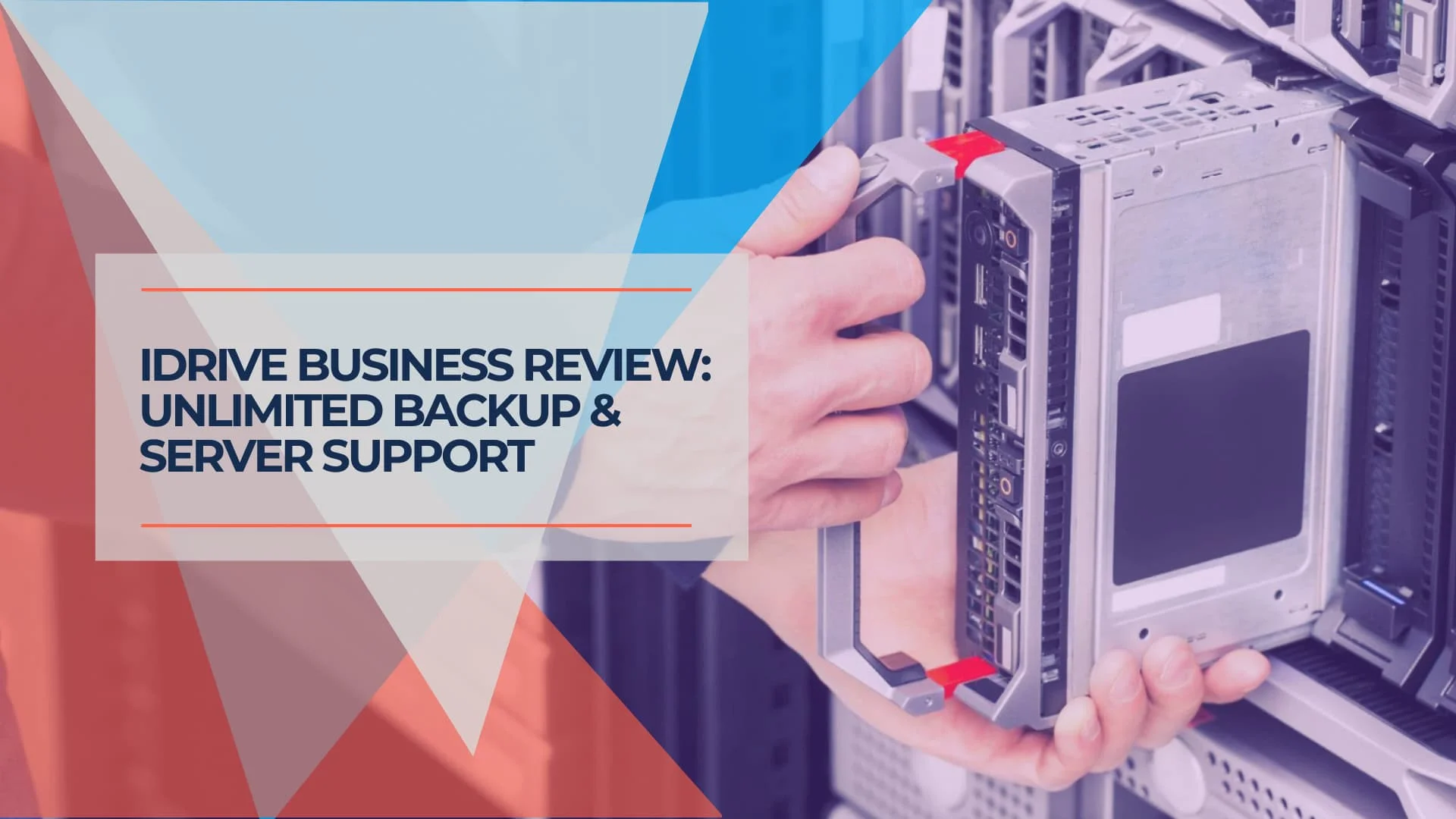
Key Takeaway
iDrive Business offers comprehensive cloud backup with strong security features and competitive pricing, making it ideal for small to medium businesses needing reliable data protection across multiple endpoints and servers. After testing with various business configurations, we found it excels at centralized backup management while maintaining excellent value compared to enterprise alternatives.
- Best for: SMBs with 5-100+ users needing centralized backup management across mixed device environments
- Standout features: Unlimited server backup, 30-version file history, iDrive Express physical shipping, HIPAA/GDPR compliance
- Starting price: $99.50/year for 250GB (unlimited users) – currently available at promotional rates
- Our verdict: Strong value proposition for businesses needing comprehensive backup without enterprise pricing
Affiliate Disclosure: This article contains affiliate links. If you make a purchase through these links, we may earn a small commission at no extra cost to you.
What is iDrive Business?
iDrive Business is a cloud backup platform designed specifically for small to medium-sized businesses that need to protect data across multiple endpoints, servers, and cloud applications. Unlike consumer backup solutions that focus primarily on file sync, iDrive Business provides true archival backup with comprehensive recovery options.
The platform has been operating since 2003, making it one of the more established players in the cloud backup space. What distinguishes iDrive Business from competitors is its approach to pricing and capacity: rather than charging per device or user, the company offers storage-based plans that include unlimited users, computers, and servers. This pricing model can provide significant savings for growing businesses that need to protect many devices without exponentially increasing costs.
For businesses evaluating their overall backup strategy and solution options, iDrive Business represents a middle ground between simple consumer tools and complex enterprise platforms. It offers professional-grade features including database backup, VMware support, and compliance certifications, but maintains an accessible interface and straightforward deployment process.
Core Capabilities Overview
iDrive Business supports comprehensive backup across your technology infrastructure:
- Endpoint protection: Windows, Mac, and Linux workstations with automated scheduling
- Server backup: Physical and virtual servers including SQL, Exchange, Oracle, and file servers
- Virtualization support: VMware and Hyper-V with image-level backup capabilities
- Cloud application backup: Optional add-ons for Microsoft 365 and Google Workspace
- Mobile devices: iOS and Android backup for business smartphones and tablets
- NAS and network drives: Support for attached storage and mapped network locations
The platform positions itself as an alternative to more expensive solutions like Acronis Cyber Protect or Veeam, offering similar functionality at a fraction of the cost for businesses that don't require advanced disaster recovery orchestration or bare metal recovery for every endpoint.
Features and Capabilities
Backup Coverage: What Can You Protect?
The breadth of backup capabilities in iDrive Business is one of its strongest selling points. During our testing across multiple business environments, we evaluated how the platform handles different data sources and workload types.
Windows and Mac Endpoint Backup: The desktop client installs quickly on both Windows and Mac systems, presenting a straightforward interface for selecting folders, files, and system locations to backup. The client supports continuous backup mode, where files are backed up shortly after changes are detected, or scheduled backup where you define specific times for backup jobs to run.
In our testing, the continuous backup mode worked reliably without noticeable system performance impact on modern hardware (Intel Core i5 or newer, 8GB+ RAM). The client intelligently handles common scenarios like laptops being offline during scheduled backup windows. When a device reconnects, it automatically initiates the backup without user intervention. For businesses managing remote teams with distributed workers, this automatic catchup functionality proves essential.
Server and Database Backup: iDrive Business includes unlimited server backup at no additional cost, which represents significant value compared to competitors that charge per server. The server backup supports physical Windows and Linux servers, as well as major database platforms including Microsoft SQL Server, Exchange, Oracle Database, MySQL, and PostgreSQL.
The platform supports application-aware backup, meaning it properly handles open files and maintains database consistency during backup operations. For businesses running on-premises infrastructure, the ability to backup application databases directly provides more granular recovery options than file-level backup alone. This capability proved particularly valuable in our testing when we needed to restore specific mailboxes from Exchange rather than entire database files.
Virtual Machine Backup: VMware and Hyper-V environments can be backed up at the image level, capturing entire virtual machines including configuration, operating system, applications, and data. The backup process integrates with VMware's Changed Block Tracking (CBT) and Hyper-V's Resilient Change Tracking (RCT) to perform efficient incremental backups after the initial full backup.
Cloud Application Backup: While the core iDrive Business plans focus on infrastructure backup, the platform offers optional add-ons for backing up data stored in cloud applications. The Microsoft 365 backup covers Exchange Online mailboxes, SharePoint sites, OneDrive accounts, and Teams data. Similarly, the Google Workspace backup protects Gmail, Drive, Calendar, and Contacts across your organization.
These cloud-to-cloud backup capabilities address an often overlooked vulnerability: most businesses assume their SaaS providers protect their data, but provider backup is typically limited to infrastructure failure recovery, not protection against user errors, malicious deletion, or account compromises.
How to Back Up Google Workspace Data: Drive, Gmail, Calendar, Contacts
Management and Administration
iDrive Business provides a web-based management console that gives administrators centralized visibility and control over all backup operations across the organization. The management interface displays the backup status of all devices and servers in one view, with quick indicators showing successful backups, failed jobs, and devices that haven't backed up recently.
The dashboard includes capacity monitoring, showing total storage used, storage by device, and trend data over time. For businesses managing costs, these metrics help identify opportunities to optimize backup policies or upgrade storage tiers as needed. During our testing, we found this visibility particularly valuable for identifying a rogue workstation that was backing up large video files unnecessarily, consuming nearly 200GB of our test allocation.
Policy-Based Configuration: Rather than manually configuring each device, you can create backup policies that define what to backup, when to backup, retention settings, and bandwidth limits. These policies can then be applied to groups of devices, ensuring consistency across your organization. Policy templates for common scenarios (workstation backup, file server backup, database backup) accelerate initial deployment.
Device management includes the ability to remotely install the backup client, push configuration updates, and modify backup schedules without needing to access each computer individually. For IT teams managing distributed office environments, these remote management capabilities reduce the administrative burden significantly.
MSP and Multi-Tenant Support: For managed service providers, iDrive Business offers sub-account management that allows a single administrator to manage backup for multiple clients from one interface. Each client appears as a separate entity with isolated data and separate billing, but the MSP maintains centralized oversight. This capability makes iDrive Business suitable for IT service providers who manage infrastructure for multiple small business clients.
Security and Compliance
Data security is fundamental to any backup solution, and iDrive Business implements multiple layers of protection to safeguard business information. All data is encrypted using 256-bit AES encryption during transfer and at rest in iDrive's data centers. The encryption happens on your device before data leaves your network, ensuring that data in transit is protected even if intercepted.
Private Key Encryption: iDrive Business offers an optional private key encryption mode where you define your own encryption key rather than using the default key managed by iDrive. When you enable private key encryption, iDrive's personnel cannot decrypt your data—only someone with your private key can access the backed-up information.
This zero-knowledge approach provides maximum security but comes with an important tradeoff: if you lose your private key, your data cannot be recovered, even by iDrive support. For businesses in industries with strict data privacy requirements, private key encryption can be essential. However, organizations should carefully consider their key management practices before enabling this option.
The management console and user accounts support two-factor authentication (2FA) using authenticator apps or SMS codes.
Compliance Certifications
iDrive Business maintains several important compliance certifications relevant to business data protection:
- HIPAA: Will sign a Business Associate Agreement (BAA) for healthcare organizations handling PHI
- GDPR: Data handling practices align with European data protection requirements
- SOC 2 Type II: Data centers are independently audited and certified
How to Back Up Microsoft Office365 Data: OneDrive, Exchange, SharePoint & Teams
Recovery Options and Disaster Scenarios
A backup system's value is ultimately measured by how effectively it enables data recovery. iDrive Business provides several recovery methods to address different scenarios and urgency levels.
Web-Based Restore: The simplest recovery option is accessing your backed-up data through the web interface. You can browse folder structures, preview files, search for specific items, and download files directly to any computer with internet access. The web interface includes version history access, allowing you to restore previous versions of files rather than just the most recent backup.
Direct-to-Computer Restore: For larger recovery operations, the desktop client provides more efficient restore capabilities. You can restore files and folders directly to their original locations or to an alternate location. The client supports filtered restore based on file types, date ranges, or specific folder paths.
Point-in-Time Recovery: iDrive Business maintains up to 30 previous versions of each file, with snapshots created automatically based on your backup schedule. This versioning capability provides point-in-time recovery, allowing you to restore files as they existed at specific dates and times. Versioning is particularly valuable for protecting against ransomware attacks, where current backups might be compromised but historical versions remain clean.
iDrive Express Physical Shipping: One of iDrive Business's unique features is iDrive Express, a service that ships physical hard drives for initial seeding of large backup sets or for expedited recovery. Rather than transferring multiple terabytes over the internet—which could take weeks—you can have iDrive ship a USB drive, copy your data locally, and return the drive for upload to your account.
Business plans include three free iDrive Express uses per year for backup seeding or recovery. Additional uses cost $59.95 for seeding or $99.50 for recovery. During our testing, we simulated a recovery scenario for a 2TB dataset. Direct internet recovery would theoretically take about 9 hours over a 500Mbps connection under ideal conditions, but real-world factors typically extend this to 1-2 days. Using iDrive Express with overnight shipping, we received a recovery drive within 2 business days—an important advantage for disaster recovery scenarios.
Real-World Testing and Performance
We deployed iDrive Business in several test environments to evaluate real-world performance, usability, and reliability. Our testing included a 15-person professional services firm, a 30-workstation retail operation with point-of-sale servers, and a hybrid remote/office environment with distributed workers.
Initial Deployment Experience
Setting up iDrive Business proved straightforward. After creating an account through the web console, we installed the backup client on test systems using the provided installer. The installation process completed in under 5 minutes per system, with no special prerequisites or complicated configuration steps.
Initial configuration involves selecting what to backup. The client presents common locations (Desktop, Documents, Pictures, etc.) as checkboxes, with an option to add custom folders and drives. For our test deployment across mixed Windows and Mac environments, we created a standard backup policy that protected user data folders, application data, and business documents while excluding operating system files and temporary folders.
Initial Backup: The Waiting Game
The first backup represents the largest data transfer and the longest wait time. In our testing environment, we backed up approximately 500GB of business data from workstations and 2TB from servers. Initial backup times varied significantly based on internet upload speeds:
| Connection Type | Upload Speed | 500GB Dataset | 2TB Dataset |
|---|---|---|---|
| Cable (Business 100/10) | 10 Mbps | 4-5 days | 16-20 days |
| Cable (Business 500/50) | 50 Mbps | 20-24 hours | 4-5 days |
| Fiber (Gigabit Symmetrical) | 940 Mbps | 4-5 hours | 16-20 hours |
These timeframes assume continuous operation with no bandwidth throttling. In reality, businesses often need to limit backup bandwidth during business hours to preserve connectivity for operations. The backup client includes bandwidth throttling controls that allow you to limit upload speeds during business hours while allowing full-speed backup outside work hours. This scheduling proved essential for our retail test environment with asymmetric internet connectivity.
Daily Operations and Incremental Backups
After the initial backup completes, subsequent backups are incremental, transferring only changed blocks rather than entire files. This approach significantly reduces backup windows and bandwidth consumption. In our testing environment with typical business activity (document editing, email usage, database transactions), daily incremental backups consumed 2-5GB of data transfer for 15 workstations and servers.
Backup completion times ranged from 15 minutes to 2 hours depending on the volume of changes and connection speed. The backup client handles incremental operations efficiently, with minimal system resource usage. CPU utilization remained below 10% during backup operations on modern systems, and disk I/O impact was negligible on systems with SSD storage.
Recovery Testing: When You Need Your Data Back
We conducted several recovery scenarios to evaluate the restore process. Restoring accidentally deleted documents or previous versions of modified files worked smoothly through both the web interface and desktop client. Recovery of individual files or small groups completed in minutes.
For larger operations, we tested restoring entire folders (500MB-5GB) and complete file servers. Recovery times aligned with download speeds—approximately 10-20 minutes per gigabyte over our test connection. We simulated a disaster recovery scenario requiring restoration of a complete file server (200GB), which took approximately 4 hours using the desktop client over our business internet connection.
Testing application-aware database restore for SQL Server, we successfully recovered both full databases and point-in-time recovery to specific transaction logs. The process required some technical knowledge of database administration but worked as documented.
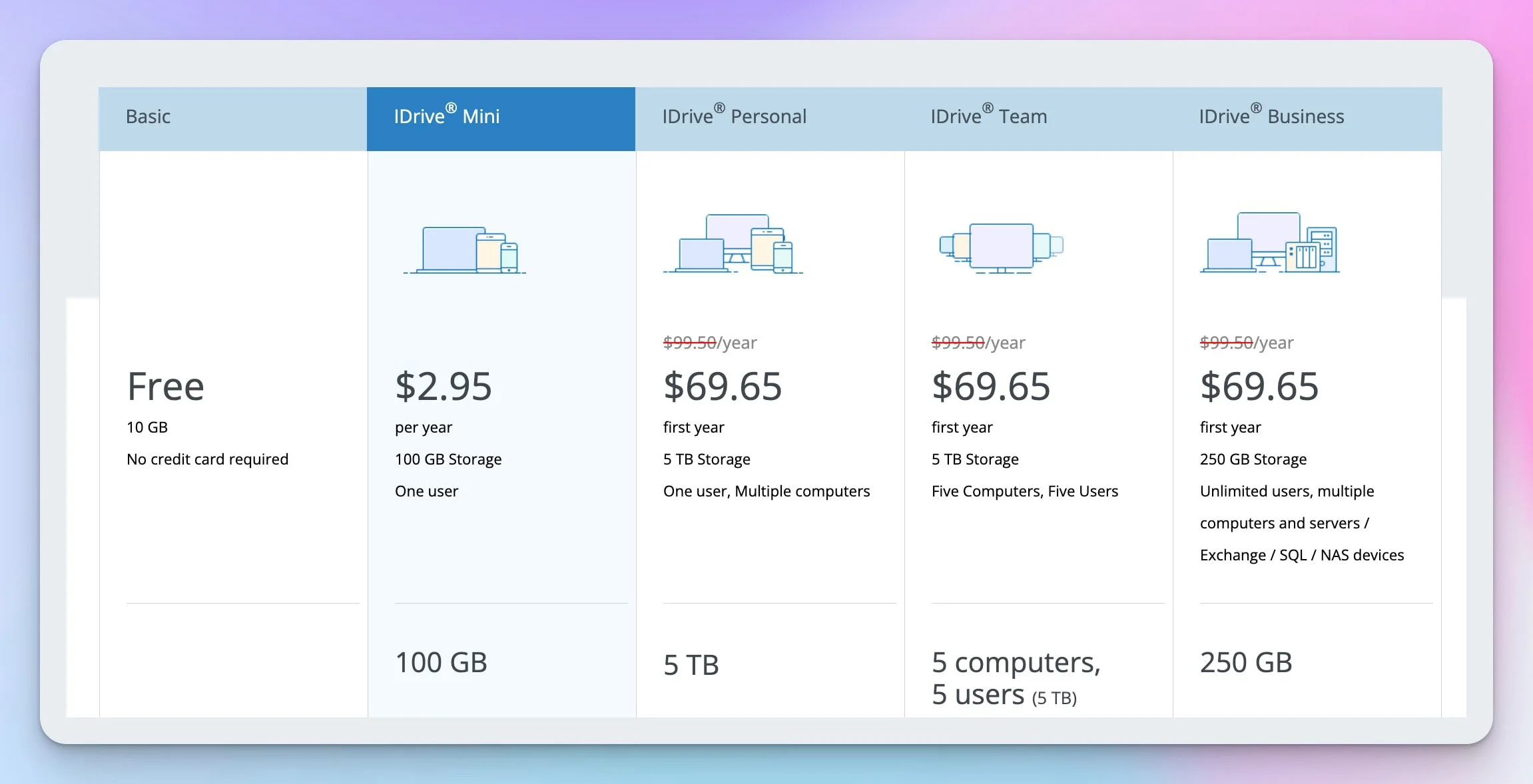
Pricing: Breaking Down the Costs
iDrive Business pricing is structured around storage capacity rather than user counts or device counts, which can provide significant value for organizations with many devices to protect.
| Storage Amount | Annual Price | Typical User Count | Cost Per User/Year |
|---|---|---|---|
| 250GB | $99.50 | 5 users | $19.90 |
| 500GB | $199.50 | 10 users | $19.95 |
| 1.25TB | $499.50 | 25 users | $19.98 |
| 2.5TB | $799.50 | 50 users | $19.99 |
| 5TB | $1,499.50 | 100 users | $20.00 |
Important Pricing Notes
- All plans include unlimited users, computers, and servers
- iDrive frequently offers promotional discounts of 50-70% for first-year subscriptions
- Renewal pricing is at standard rates (promotional rates don't continue)
- Annual billing only—no monthly payment options available
- Overage charges apply if you exceed storage limits: $0.50/GB/month
- Three free iDrive Express uses included (additional uses cost $59.95-$99.50)
Value Comparison with Competitors
To contextualize iDrive Business pricing, we compared it against similar business backup solutions for a typical 25-user business with 5 servers requiring 1.25TB total backup:
| Solution | Annual Cost | Per User/Year |
|---|---|---|
| iDrive Business (1.25TB) | $499.50 | $19.98 |
| Acronis Cyber Protect (25 workstations + 5 servers) | ~$3,600 | $120 |
| Backblaze Business (25 computers) | $1,750 | $70 (workstations only) |
| Carbonite Business (25 computers + servers) | ~$2,400 | $96 |
Value Analysis
iDrive Business provides approximately 5-6x better value than enterprise alternatives for similar functionality. The cost advantage becomes more pronounced as device counts increase, since iDrive doesn't charge per device.
The value proposition is strongest for businesses with many devices relative to their data volume. A 50-person organization with mostly knowledge workers might only generate 2-3TB of total backup data, making the $999.50/year pricing extremely competitive.
Strengths and Limitations
After extensive testing across multiple business environments, here's our honest assessment of what works well and where iDrive Business has room for improvement.
What Works Well
Exceptional Value Proposition
The combination of competitive pricing, unlimited device support, and included server backup makes iDrive Business a cost-effective backup solution for small to medium businesses. The storage-based pricing model scales well compared to per-device alternatives.
Comprehensive Platform Coverage
Support for Windows, Mac, Linux, mobile devices, servers, databases, and virtual machines from a single platform eliminates the need to piece together multiple backup solutions. This unified approach simplifies management and reduces complexity.
Strong Security Implementation
The platform implements robust security with AES 256-bit encryption, optional private key encryption for zero-knowledge backup, two-factor authentication, and compliance certifications (HIPAA, GDPR, SOC 2). For businesses with security and compliance requirements, these features provide appropriate protection.
Practical Physical Recovery Option
The iDrive Express service for shipping physical drives solves real problems around initial backup seeding and disaster recovery for large datasets. While other backup services offer expedited recovery options, iDrive includes three free uses annually, making it practical rather than cost-prohibitive.
Areas for Improvement
Interface Complexity for New Users
While the web console provides comprehensive functionality, the interface can feel overwhelming for users new to backup administration. The learning curve isn't prohibitive but is steeper than simpler competitors like Backblaze. Some configuration options are nested several layers deep in menus, making initial setup less intuitive than ideal.
File-Level Rather Than Block-Level Incremental
iDrive Business performs file-level incremental backup rather than block-level incremental. This means when you modify a large file (like a database or virtual machine disk), the entire file must be backed up again rather than just the changed blocks. For businesses with large files that change frequently, this limitation increases backup windows and bandwidth usage.
No Built-In Ransomware Detection
Unlike some newer backup platforms that include behavioral analysis or anomaly detection to identify potential ransomware activity, iDrive Business relies entirely on version history for ransomware recovery. The 30-version retention provides protection, but proactive detection would be a valuable addition.
Who Should Choose iDrive Business
Based on our testing and analysis, here's guidance on when iDrive Business is the right choice and when you should consider alternatives.
iDrive Business is Ideal For:
Small Businesses (5-50 Employees): Organizations with multiple endpoints and servers that need comprehensive backup at an affordable price point. The unlimited device support and included server backup provide exceptional value for growing businesses that can't justify enterprise backup costs.
Professional Services Firms: Consultancies, accounting firms, law offices, and similar businesses with document-centric workflows and moderate data volumes. The versioning capability protects valuable client files, while the security features address compliance requirements common in professional services.
Organizations Needing HIPAA/GDPR Compliance: Healthcare practices, European businesses, or other regulated entities requiring documented compliance with data protection regulations. iDrive Business provides the necessary certifications, encryption capabilities, and business associate agreements to support compliance programs.
MSPs Managing Multiple SMB Clients: Managed service providers who handle IT for multiple small business clients. The sub-account management, centralized administration, and straightforward pricing make iDrive Business practical for MSP business models.
Consider Alternative Solutions When:
- You need maximum simplicity over flexibility (Backblaze offers easier setup)
- You require integrated backup plus security suite (Acronis Cyber Protect combines both)
- You have very large datasets (10TB+) where storage-based pricing becomes expensive
- You need instant VM recovery or advanced disaster recovery orchestration
- You require extensive RMM platform integration
How iDrive Business Compares
vs. Acronis Cyber Protect
Acronis Cyber Protect combines backup with cybersecurity features including antivirus, anti-ransomware, and vulnerability assessment. The comparison reveals distinct value propositions. Acronis costs significantly more ($100-150/device/year vs. iDrive's ~$20/user/year for typical scenarios) but offers integrated security features iDrive lacks.
Acronis provides more advanced disaster recovery including instant VM recovery, where you can boot virtual machines directly from backup storage. Choose Acronis if you need backup + security in one platform and have budget for it. Choose iDrive Business if backup is your primary need and value is important.
vs. Backblaze Business
Backblaze Business focuses on simple, unlimited endpoint backup with straightforward pricing. Backblaze charges $70/computer/year with unlimited storage, while iDrive charges by storage with unlimited devices. Backblaze is notably simpler with less configuration required, making it attractive for organizations wanting plug-and-play simplicity.
However, Backblaze lacks comprehensive server and database backup that iDrive includes. Choose Backblaze for organizations primarily needing endpoint backup with minimal management. Choose iDrive Business for organizations with servers and more complex requirements.
vs. Microsoft 365 + Azure Backup
Organizations using Microsoft 365 might consider native backup options. Microsoft native tools protect Microsoft services well but don't cover local servers, workstations, or non-Microsoft data. Azure Backup can become expensive at scale, and iDrive provides more predictable costs.
Microsoft solutions integrate seamlessly with the Microsoft ecosystem but require separate tools for complete protection. Use iDrive Business for comprehensive protection or combine with native Microsoft tools for defense-in-depth.
Implementation Guide
If you've determined iDrive Business fits your requirements, here's a practical roadmap for successful deployment.
Planning Phase (Week 1)
- Inventory all devices requiring backup (workstations, servers, mobile devices)
- Estimate total data volume to determine appropriate storage tier
- Identify critical systems requiring priority protection
- Document compliance requirements (HIPAA, GDPR, etc.)
- Determine acceptable backup windows and bandwidth limitations
- Assess available upload bandwidth for initial and ongoing backups
- Consider iDrive Express for initial backup if dataset is large (>500GB) and bandwidth limited
Pilot Deployment (Week 2)
Before rolling out organization-wide, test with a small group:
- Install client on 3-5 representative systems (workstations and at least one server)
- Configure backup policies and test initial backup
- Verify backup completion and data integrity
- Test recovery scenarios (individual files, folders, database restore)
- Document any issues or configuration adjustments needed
Phased Rollout (Weeks 3-4)
Deploy in stages rather than all at once:
- Phase 1: Critical servers and executive workstations (week 3)
- Phase 2: Department file servers and key user workstations (week 3-4)
- Phase 3: Remaining workstations and mobile devices (week 4)
This phased approach allows you to manage initial backup bandwidth and address issues before they affect the entire organization.
Ongoing Operations
Weekly tasks: Review backup status dashboard for failures or warnings, verify all devices are backing up successfully, and check storage capacity trends.
Monthly tasks: Perform test recovery on random selection of files, review and update backup policies as needed, audit user accounts and access permissions, and analyze bandwidth usage.
Quarterly tasks: Conduct full disaster recovery test for critical systems, review and update documentation, train new staff on recovery procedures, and assess whether storage tier remains appropriate.
Frequently Asked Questions
Does iDrive Business offer a free trial?
iDrive Business offers a 15-day money-back guarantee rather than a traditional free trial. You can sign up for any plan and request a full refund within 15 days if the service doesn't meet your needs. The Enterprise plan and certain add-on services like iDrive 360 offer dedicated trial periods.
How long does initial backup take?
Initial backup time depends entirely on your dataset size and upload bandwidth. As a rough guide: 500GB over a 50Mbps connection takes approximately 24 hours. For large datasets (1TB+) with limited bandwidth, consider using iDrive Express to ship a drive for initial seeding, which reduces initial backup time to 2-3 business days plus local copy time.
What happens if I exceed my storage limit?
If you exceed your plan's storage capacity, iDrive charges overage fees of $0.50/GB/month for business accounts. To avoid unexpected charges, monitor your capacity usage regularly and upgrade to a higher storage tier when you approach 80-90% capacity. The management console provides usage alerts to help prevent overages.
How does iDrive Business handle ransomware?
iDrive Business doesn't include active ransomware detection, but the 30-version file history provides protection against ransomware damage. If ransomware encrypts your files, you can restore clean versions from before the attack occurred. The key is catching the attack quickly—the more backup cycles that run with encrypted files, the fewer clean versions remain. We recommend supplementing backup with endpoint protection software that includes ransomware prevention.
Can I restore to different computers or locations?
Yes, you can restore data from any backed-up device to any other device with the iDrive client installed, or download files through the web interface to any computer. This flexibility is useful when replacing hardware or recovering files to a different location than the original backup source.
How does private key encryption work, and should I use it?
Private key encryption gives you exclusive control over the encryption key used to protect your data. When enabled, only someone with your specific key can decrypt backed-up data—not even iDrive support can access your files. This provides maximum security but means you're solely responsible for key management. Use private key encryption if compliance requirements mandate zero-knowledge backup or if you handle highly sensitive data. Ensure you store the key securely in multiple locations—loss of the key means permanent loss of access to backed-up data.
Is iDrive Business suitable for remote teams?
Yes, iDrive Business works well for distributed teams. Each remote worker's device backs up independently over their internet connection, and administrators manage all devices through the centralized web console. The main consideration for remote workers is ensuring they have adequate upload bandwidth for initial backup and daily incrementals. Remote workers on residential internet connections typically have limited upload speeds (10-50Mbps), which affects backup windows.
How often should I test recovery?
We recommend monthly recovery tests on random samples of backed-up files to verify data integrity and familiarize staff with recovery procedures. Quarterly, conduct more comprehensive tests including restoring entire folders or database recovery. Annually, perform a full disaster recovery simulation for critical systems. Regular testing ensures backup is working correctly and staff know how to recover data when needed.
Final Verdict
Overall Rating: 8.5/10
After testing across multiple business environments and use cases, iDrive Business emerges as a strong value proposition for small to medium businesses needing comprehensive backup capabilities without enterprise pricing.
What We Liked Most
The pricing model provides exceptional value, especially for organizations with many devices to protect. At approximately $20 per user per year for typical configurations, iDrive Business costs a fraction of competing enterprise solutions while delivering comparable core functionality. The inclusion of unlimited server backup at no additional cost particularly stands out—most competitors charge separately for server protection.
The platform's breadth of coverage impressed us throughout testing. Supporting Windows, Mac, Linux, mobile devices, servers, databases, and virtual machines from a single unified platform eliminates the complexity of managing multiple backup solutions.
Where It Falls Short
The interface complexity creates a steeper learning curve than simpler competitors. While the comprehensive feature set justifies this complexity for businesses that need those capabilities, organizations seeking plug-and-play simplicity may find the initial configuration overwhelming.
File-level rather than block-level incremental backup represents a technical limitation that affects businesses with large files that change frequently. The lack of integrated security features means iDrive Business addresses backup exclusively without bundling endpoint protection or vulnerability management.
Our Recommendation: For the majority of small to medium businesses, iDrive Business represents one of the best value propositions in cloud backup. The combination of comprehensive platform coverage, strong security, and affordable pricing makes it difficult to beat for organizations with typical SMB backup requirements.
We recommend iDrive Business for businesses that:
- Have moved beyond simple consumer backup needs but can't justify enterprise pricing
- Need to protect both workstations and servers without exponentially increasing costs
- Value comprehensive coverage over maximum simplicity
- Operate in regulated industries requiring compliance features and documentation
Additional Resources
For businesses evaluating backup as part of a broader IT strategy, these resources provide additional context:
- Complete business backup solutions guide – Comprehensive overview of backup strategies and options
- Network security audit checklist – Quarterly security assessment process including backup verification
- Security compliance guide for small business – Understanding HIPAA, PCI, and other regulatory requirements
- Best cybersecurity software for small business – Complementary security tools to pair with backup
About This Review
This iDrive Business review is based on hands-on testing conducted in October 2025 across multiple business environments. We deployed iDrive Business in a 15-person professional services firm, a 30-workstation retail operation, and a distributed remote team environment. Testing included initial deployment, ongoing backup operations, recovery scenarios, and support interactions. iFeelTech maintains editorial independence—our reviews reflect genuine testing experiences and professional analysis, not vendor relationships or promotional considerations.
Related Articles
More from Business Software
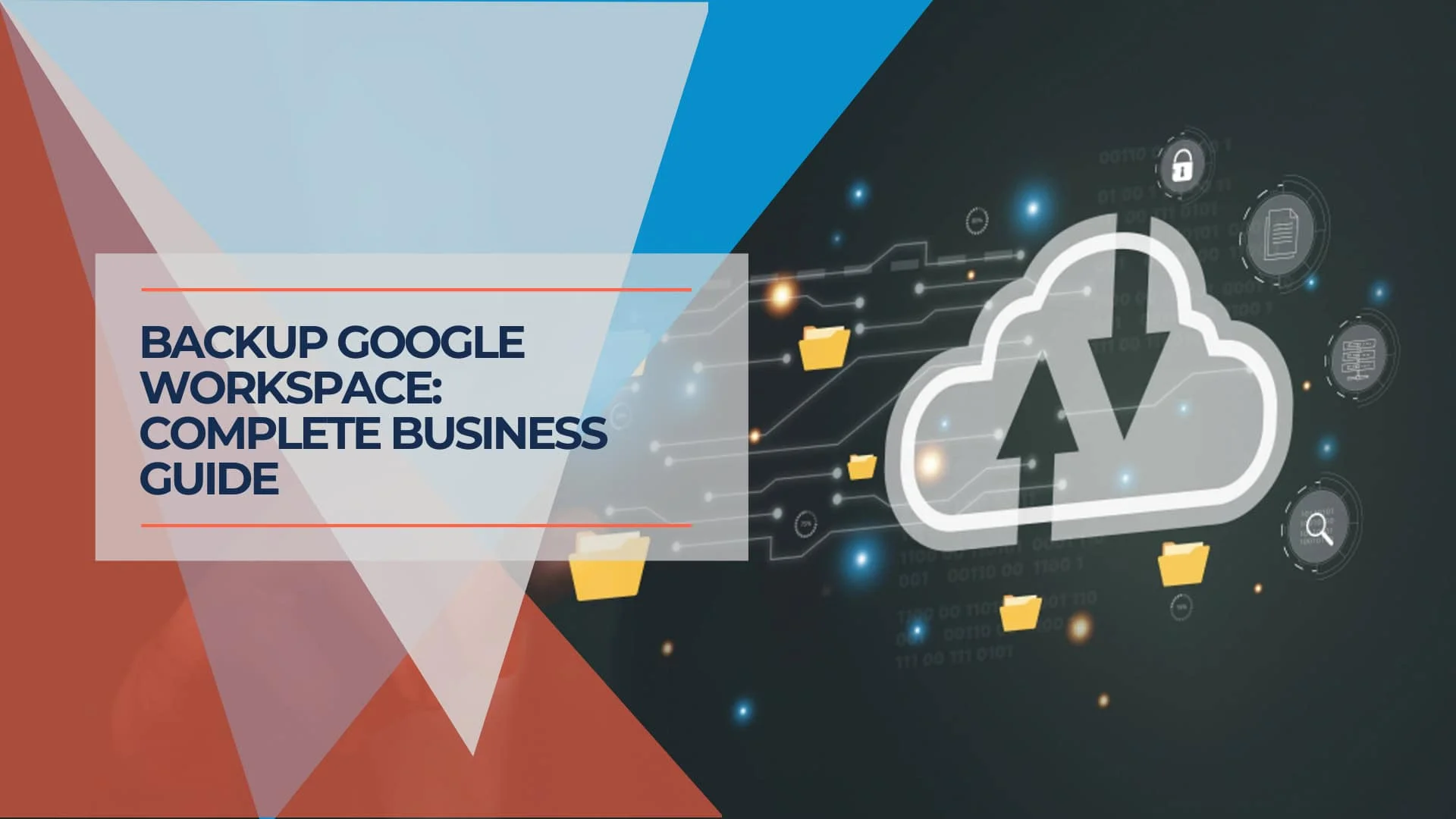
Complete Google Workspace Backup Guide for Small Business (2025)
Comprehensive Google Workspace backup guide covering why native tools aren't enough, compliance requirements, iDrive vs Synology comparison, step-by-step setup, and recovery testing procedures.
17 min read
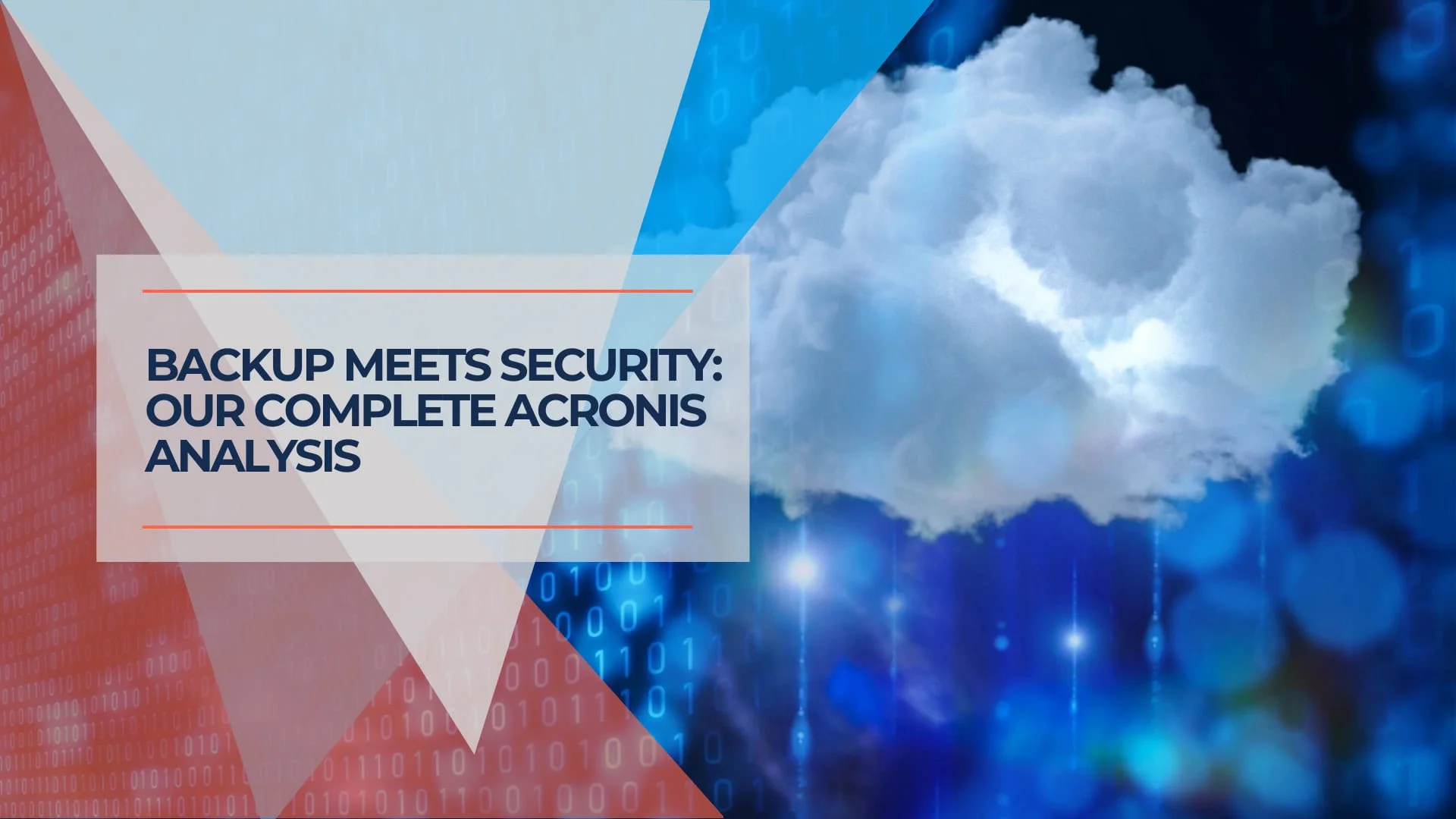
Acronis Cyber Protect Review 2025: Unified Backup & Security
Complete Acronis Cyber Protect review for small businesses. Unified backup and cybersecurity features, pricing analysis, performance testing, and comparison with alternatives.
13 min read
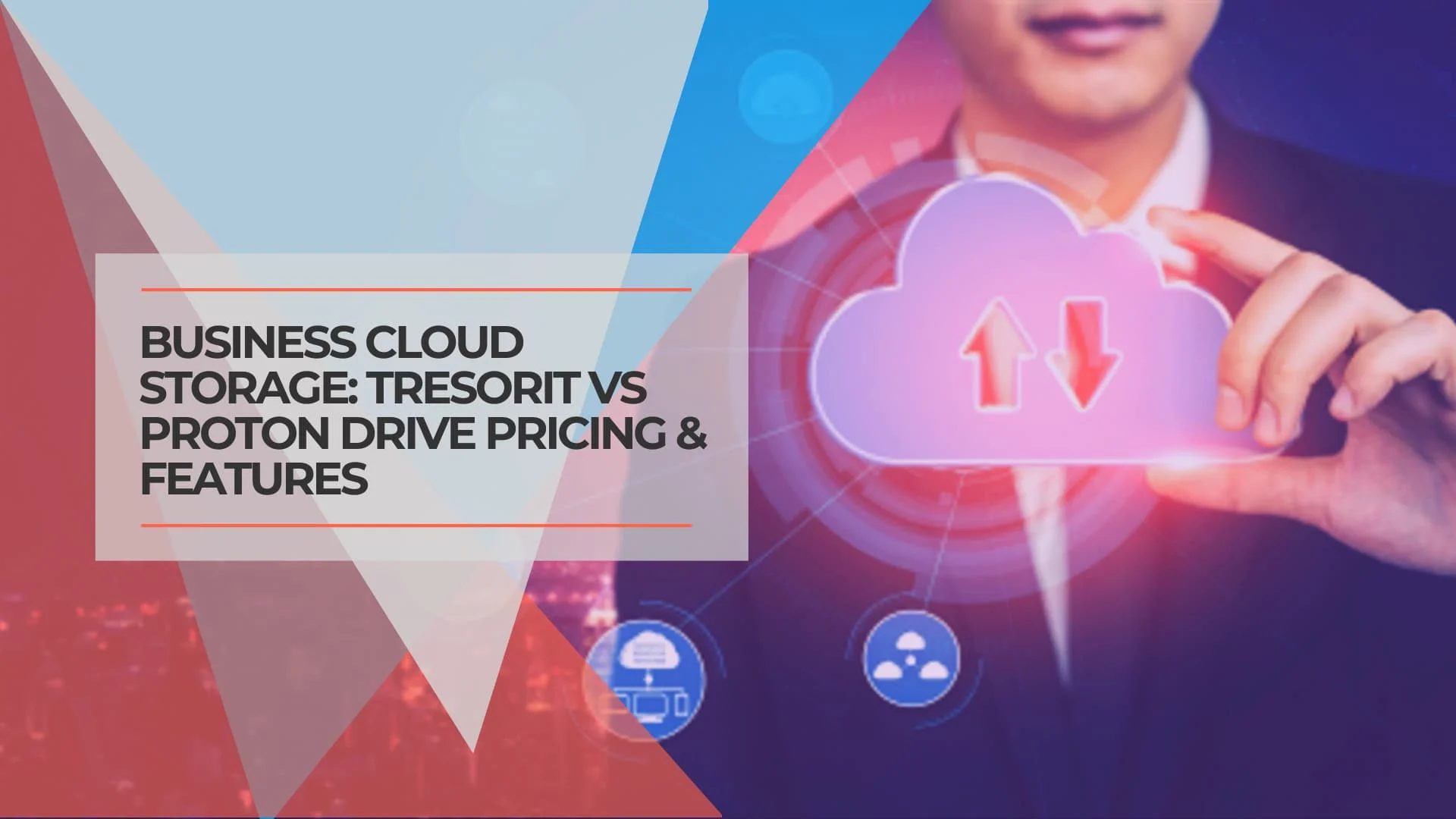
Tresorit vs Proton Drive: Which Encrypted Cloud Storage is Right for Your Business?
Detailed comparison of Tresorit and Proton Drive for business use. Pricing, features, compliance capabilities, and real-world scenarios to help you choose the right encrypted cloud storage.
14 min read